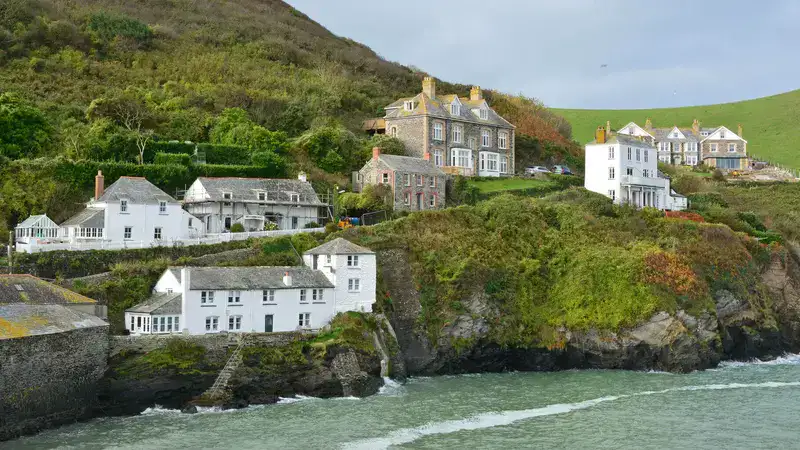Coastal living offers stunning views, vibrant ecosystems, and a unique lifestyle. However, it also comes with significant risks, particularly when it comes to protecting your family keepsakes. Floods, hurricanes, and storm surges are just a few of the dangers that can wreak havoc on your home and belongings. Understanding these risks is essential for safeguarding your cherished possessions.
The Risks of Living Near Coastlines
Living near the coast has its allure, but the threats are real and increasingly frequent. Coastal areas are vulnerable to natural disasters, including hurricanes and tropical storms, which can lead to severe flooding and property damage. Additionally, rising sea levels pose a long-term threat, gradually eroding shorelines and increasing the risk of inundation.
During hurricane season, strong winds and storm surges can cause extensive damage, even to homes that may appear secure. These unpredictable weather patterns make it crucial for coastal residents to be aware of the potential risks and take steps to mitigate them.
Vulnerability of Coastal Homes
Coastal homes face unique challenges due to high humidity, saltwater exposure, and extreme weather conditions. The salt in the air can corrode metal fixtures, appliances, and electronics, while the constant moisture can promote mold growth. When combined with the threats of flooding, the vulnerability of personal belongings becomes apparent.
Family heirlooms, photographs, and important documents are at high risk in these environments. Water damage can ruin items that hold sentimental value, while prolonged exposure to humidity can warp or decay keepsakes. Understanding how these elements affect your belongings is the first step toward protecting them.
Protecting Your Most Valuable Items
To safeguard your most valuable keepsakes from the threats posed by coastal living, consider implementing the following protective measures:
1. Climate-Controlled Storage
A climate-controlled storage unit can help protect sensitive items from high humidity and temperature fluctuations. If you have valuable items that are particularly vulnerable, consider storing them in a facility that maintains a stable environment.
2. Waterproof Containers
Investing in high-quality waterproof containers can provide an additional layer of protection. These containers are designed to keep water out, ensuring your keepsakes remain safe during floods. Be sure to choose durable materials that can withstand the unique challenges of coastal living.
3. Elevated Storage Solutions
Storing your valuables off the ground can significantly reduce the risk of water damage. Consider installing shelves or cabinets that keep items elevated, especially in flood-prone areas.
4. Inventory and Documentation
Create a detailed inventory of your keepsakes, including photographs and descriptions of each item. This documentation will help you keep track of your belongings and can also be invaluable for insurance claims in the event of damage or loss.
READ MORE: Lola Brooke Height and Weight
Emergency Preparedness for Coastal Residents
Preparing for hurricanes and rising sea levels is vital for those living in coastal areas. Here are some tips to help you be ready when disaster strikes:
1. Develop an Emergency Plan
Having a comprehensive emergency plan can make a significant difference during a crisis. Identify evacuation routes, establish a meeting point for family members, and ensure everyone knows their roles. Include your keepsakes in your emergency planning, prioritizing what to take if you need to evacuate quickly.
2. Emergency Supplies
Create an emergency supply kit with essential items like water, non-perishable food, first-aid supplies, flashlights, batteries, and important documents. Don’t forget to include protective items for your keepsakes, such as waterproof bags or containers.
3. Stay Informed
Keep up to date with local weather reports and alerts. Many coastal areas offer real-time notifications about storms and other hazards. Having this information at your fingertips can help you take action before disaster strikes.
Digitization for Added Protection
In addition to physical protection, digitizing your family heirlooms and photos can provide an invaluable layer of security. I remember my grandparents used to have boxes of VHS tapes and Hi8 tapes stacked in their basement, filled with family gatherings, birthdays, and those awkward holiday performances we all cringe at now. Each videotape was a treasure trove of memories, but with every passing year, I worried about the risk of water damage or mold, especially in that damp basement. That’s when I decided to have them digitized.
Using services that specialize in VHS to digital conversion or Hi8 to digital transfers to protect your video memories. Hi8 tapes, while becoming increasingly rare, often contain cherished moments that deserve preservation. Once digitized, these memories can be easily stored in the cloud, making them accessible even if you need to evacuate quickly.
Plus, digitizing your keepsakes means you can share them with family members without worrying about wear and tear. Instead of just showing them a physical tape that might get damaged, you can send a digital file of that memorable family vacation or the time we all gathered for Grandma’s 80th birthday. This way, those moments live on, easily shared and enjoyed by generations.
Here you can read more: Who is Domelipa: Age, Bio, Net Worth, and Her Social Media Career
Conclusion
Coastal living offers unique challenges when it comes to protecting your family keepsakes. With the increasing frequency of floods, hurricanes, and other natural disasters, understanding how to safeguard your valuables is essential. By implementing protective measures, preparing for emergencies, and digitizing your precious memories, you can help ensure that your family’s legacy endures despite the unpredictability of coastal life. These proactive steps will provide peace of mind, allowing you to enjoy the beauty of seaside living while safeguarding what matters most.

